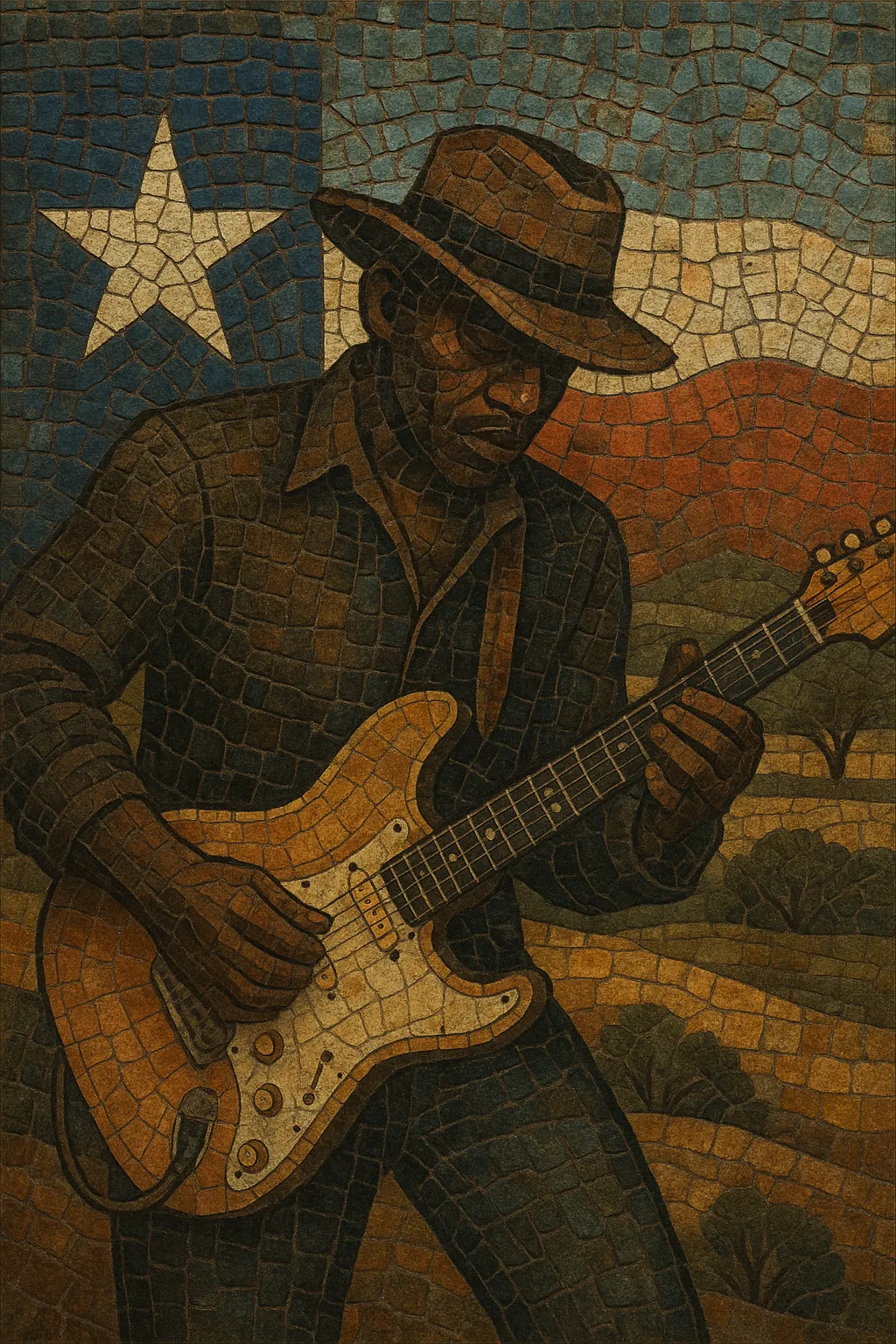
Texas blues is a regional style of American blues that began with acoustic, itinerant singer–guitarists in the 1920s and evolved into a distinctive electric, guitar-forward sound by the 1940s and 1950s.
It blends the storytelling and open-road feel of country blues with jazz-influenced harmony, swing rhythms, and boogie-woogie drive. Melodic single-note lines, fluid bends, and crisp, rhythmic shuffles are hallmarks, whether played solo on acoustic guitar (early era) or through cranked tube amps with a Stratocaster bite (later era).
Across decades—from Blind Lemon Jefferson to T-Bone Walker, Lightnin’ Hopkins, and Stevie Ray Vaughan—the style has stayed rooted in I–IV–V blues forms while embracing a strong groove, spacious phrasing, major–minor pentatonic mixtures, and a confident, expressive guitar voice.
Texas blues emerged in the 1920s with traveling singer–guitarists such as Blind Lemon Jefferson, who recorded sides that defined the region’s lyrical storytelling and flexible time feel. Early Texas blues often featured a lighter touch than Delta blues, drawing on ragtime syncopation and country dance music. Acoustic guitar accompaniments mixed alternating-bass patterns with treble runs and open-string figures, creating an easy lilt that suited the narrative songs of the era.
As players moved to cities like Dallas, Houston, and later Los Angeles, the music absorbed swing and jazz. T-Bone Walker electrified the Texas guitar sound, introducing horn-like single-note lines, sophisticated dominant-9 voicings, and a suave stage presence. The groove leaned into shuffles and boogies, backed by bass, drums, and sometimes horns or piano. This urbane, swinging approach helped catalyze jump blues and informed postwar electric blues nationwide.
Lightnin’ Hopkins and Mance Lipscomb carried forward a leaner, roots-focused thread—earthy, conversational vocals with spare but incisive guitar. Their recordings preserved the front-porch directness of early Texas blues while coexisting with the city’s more polished, band-driven iterations.
Texas’s guitar lineage continued through Freddie King, Albert Collins, Johnny Winter, and the Vaughan brothers. Stevie Ray Vaughan’s 1980s breakthrough reignited international interest, marrying Texas shuffle tradition with rock energy and heavy string tone. The sound continues to shape electric blues and blues-rock worldwide, its trademarks—ferocious shuffles, vocal-like bends, and major–minor pentatonic color—remaining central to modern guitar idiom.

